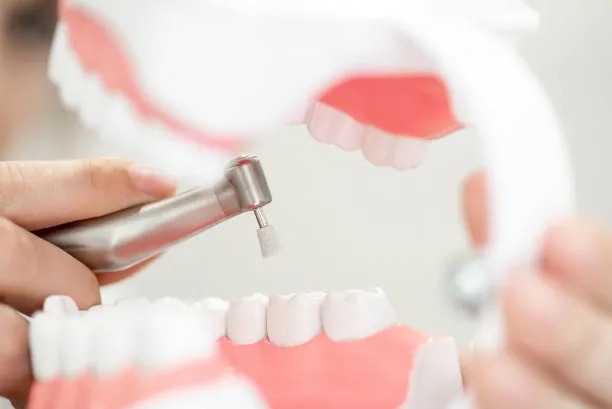The Importance of Proper Techniques and Aftercare When You Need to Extract a Tooth
Summary: Extracting a tooth is a delicate procedure that requires proper techniques and diligent aftercare to ensure the best outcome. This article emphasizes the significance of using appropriate extraction methods to minimize pain, prevent complications, and facilitate recovery. Furthermore, understanding the importance of aftercare can significantly enhance healing and maintain oral health. From preparing for extraction, managing immediate aftercare, recognizing potential complications, and following up with dental professionals, each aspect plays a crucial role. Adhering to these principles not only aids in a successful tooth extraction but also fosters long-term oral hygiene and health.
1. Importance of Proper Extraction Techniques

Tooth extraction, though common, is a procedure that involves various techniques that can significantly influence the success of the operation. A qualified dental professional will evaluate the tooths condition, the surrounding tissue, and the patients medical history to determine the most suitable method for extraction. Utilizing the appropriate techniques minimizes trauma to the surrounding areas, reduces bleeding, and significantly lowers the risk of complications.
A common technique involves the use of local anesthesia to numb the area around the tooth. Proper anesthesia is vital; it helps the dentist perform the procedure with minimal discomfort to the patient. This careful preparation sets the tone for a smooth extraction process, allowing for greater precision and care during the removal.
The tools used during the extraction also contribute to the effectiveness of the procedure. Dental professionals utilize a variety of specialized instruments, such as elevators and forceps, designed to maximize efficiency while minimizing patient discomfort. When used skillfully, these tools enable a quicker recovery and reduce postoperative complications.
2. Managing Immediate Aftercare Effectively
After a tooth extraction, the immediate care taken by the patient can significantly impact healing. Patients typically experience some bleeding, swelling, and discomfort immediately following the procedure. Therefore, its essential to follow the dentist’s advice regarding biting down on gauze to manage bleeding effectively. This step helps form a blood clot, a critical component for healing.
Furthermore, ice packs can be applied to the exterior of the mouth to reduce swelling. Keeping the head elevated during the recovery period can also help minimize swelling and discomfort. Each of these immediate aftercare techniques is crucial for a successful recovery, reducing the likelihood of further complications such as dry sockets.
Following the dentists instructions about diet is also critical in the post-extraction phase. Its advisable to consume soft foods and to avoid hot or spicy meals that could irritate the extraction site. Staying hydrated is essential, but patients should be cautious to avoid using straws, which can dislodge a blood clot and lead to a painful complication.
3. Recognizing and Addressing Potential Complications
Every dental procedure comes with potential risks, and tooth extraction is no exception. One of the primary complications is dry socket, which occurs when the blood clot fails to form correctly, exposing the bone and nerves. Recognizing the symptoms, such as persistent pain or a foul odor, can help patients seek prompt treatment, thereby alleviating discomfort and facilitating healing.
Infection is another potential complication that may arise post-extraction. Swelling, fever, and increased pain around the extraction site may indicate the presence of an infection. Understanding these warning signs helps patients to seek medical attention quickly, preventing further complications and ensuring a swift recovery.
Therefore, effective communication with the dental provider is essential during recovery. Patients should feel empowered to discuss their concerns or unusual symptoms with their dentist promptly. This practice not only addresses complications quickly but also fosters a trusting relationship between the patient and the healthcare provider, enhancing the overall care experience.
4. Importance of Follow-Up Care
Follow-up appointments are a crucial part of the extraction process. Scheduled check-ups allow dental professionals to monitor healing and address any complications that may arise. These visits are instrumental in ensuring the extraction site is healing well and that no infections or complications have developed.
Additionally, follow-up visits offer the dentist an opportunity to educate patients on proper dental care routines post-extraction. A comprehensive oral hygiene regimen helps maintain healing and promotes overall dental health. Patients are encouraged to ask questions related to their recovery, ensuring that they comprehend home care instructions thoroughly.
Lastly, during follow-up appointments, the dentist can assess whether any further dental work is necessary, such as replacing the extracted tooth. Being proactive concerning one’s dental health is vital, and these follow-ups provide a chance to discuss future treatment options, contributing to long-term oral health stability.
Summary:
The journey of tooth extraction involves intricate and careful planning before, during, and after the procedure. The success of extraction relies heavily on the techniques employed and the diligence of post-care practices. Moreover, being aware of potential complications and valuing follow-up visits can significantly enhance recovery and long-term oral health.
This article is compiled by Vickong Dental and the content is for reference only.


